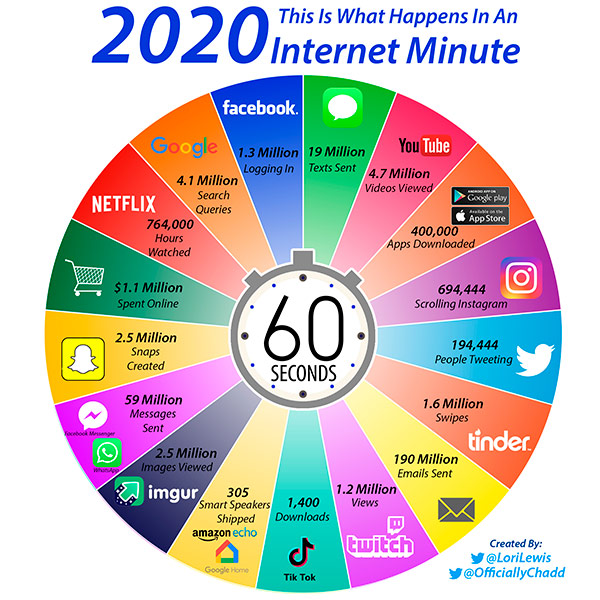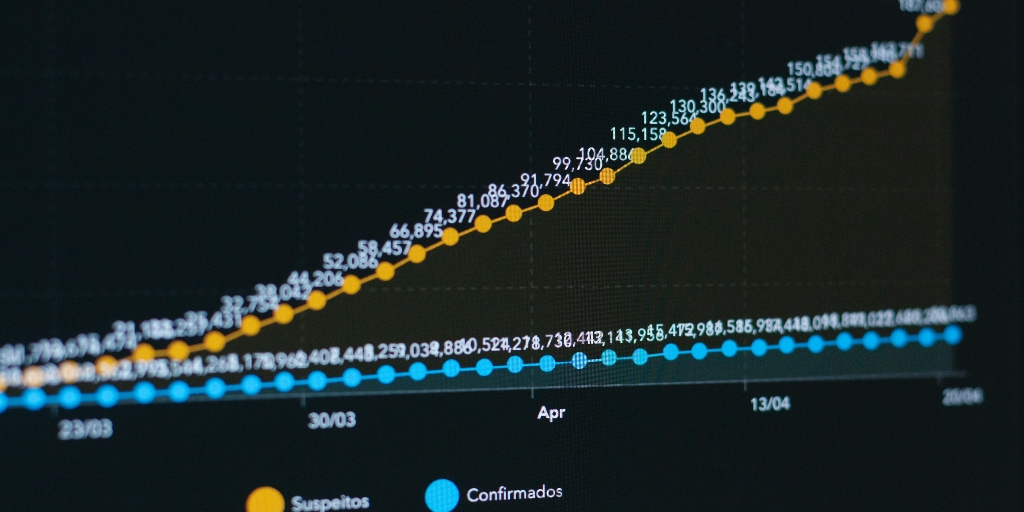How data and creativity can help you survive the future of marketing
- Last Updated : June 12, 2023
- 723 Views
- 6 Min Read

The marketing world is always changing because the needs and demands of consumers never stay the same. But nobody could have predicted how the COVID-19 crisis has forced the marketing industry to adapt and evolve faster than ever before, and technology has been at the centre of it all.
Mobile phones, tablets, smartwatches, laptops—you name it. We rely on technology for so many of our needs that it's become impossible to imagine a life without it. And while there are valid concerns about the role technology plays in our lives, it's only fair to point out that it was because of technology that we were able to stay connected with the rest of the world during the pandemic. Today, most of the businesses that have thrived have done so because of digitisation.
One example is how ABC continued to gather and broadcast news during the pandemic.
Anna Henderson, a reporter at ABC, used to work around the Parliament House in Canberra. Now, she broadcasts through an iPhone at a mini studio in her living room. She has managed to record, edit, and file radio news reports, write scripts, and send breaking news alerts to every newsroom across the country—all from her home.
''The Tonight Show starring Jimmy Fallon" is another example. With the lockdown restrictions, Fallon couldn't host the talk show the same way he used to. Instead, he recreated it from his home—donning pyjamas, holding a logo crayoned by his daughter, cracking jokes with people through Zoom, and bringing the same charm the show always had to audiences worldwide. And guess what? People loved the “at-home edition” because it was accessible and relatable.
These examples highlight something that the marketing industry is now catching on to: using technology in creative, targeted, and relatable ways builds lasting impressions with consumers. It's no longer just about who has the most data. It's about how that data is used.
Below, we go over the three steps to forming a marketing approach that will help your organisation survive a post-pandemic world.
Gathering information
According to a 2009 report published by the University of California-San Diego, the average American consumes 34 gigabytes of information every day. Not to mention that figure has probably risen even further due to our increased reliance on technology over the past 12 years. To help understand the gravity of the situation, here's how every minute on the internet looked like in 2020.

Given the time each of us spends on Facebook, Twitter, Netflix, and more, these collective numbers shouldn't surprise us. It may be tempting to cringe at all the time "wasted" on these platforms, but the fact is that access to all this information can be used to our benefit. The more we learn about something, the better control and perspective we get over it. Even if it's something as simple as understanding what type of content gets more attention on social media or observing what communication traits people admire in your competitors, it all comes together to help you make more data-driven marketing decisions in the future.
From exploring new opportunities to understanding what already works and what doesn't, being well-informed is the first step towards achieving your goal.
Being creative
So having this information is great, but what happens when it's too much information? Let's say you spend hours researching for a blog you want to write, but after all that time, you're still wondering how to start. Your brain is too busy trying to process everything you studied that you have no idea how to incorporate it all in your blog. This leaves you feeling confused, and your overall productivity slows dramatically.
As a marketer, you don't have time to waste. Getting past that information overload means thinking outside the box and using your judgement to decide what's right for the campaign and what isn't. Creativity leads to proactive choices that keep you moving ahead in today's highly competitive world.
Combining data and creativity
On their own, gathering information and being creative are not enough. Creativity gives you the drive and inspiration, but data tells you where you are going. When a marketer learns to use data creatively, the resulting campaigns are more targeted and successful. This has been true all throughout history, such as when Leonardo Da Vinci used physics concepts in his drawings and Beethoven used mathematics in his music. The results were marvellous pieces of art that have been remembered for centuries. Today, this technique will help you stay relevant as the business world evolves.
Here are five ways to combine data and creativity to fuel your marketing success.
1. Collect real-time customer insights
Great customer service is what sets a business apart, but if you don't know what your customers need, then it's impossible to serve them. Back when the pandemic hit businesses hard, we at Zoho used our partner network across the globe to learn what our customers needed at that moment and provide it to them quickly. Feedback from our partners and consumers allowed us to target our support efforts as well, so customers were getting help in the way they wanted it.
2. Be agile in your communications
Stay open and approachable to a customer's needs, and be ready to receive their feedback and interact with them through multiple channels. Whether they ask a small favour to change a product's delivery date or express concern over a significant privacy issue, always be ready to have a simple, straightforward conversation by whatever means necessary. This will help you improve your services and show your customers that you are dedicated to their satisfaction.
3. Develop personal connections
Your customers don't need mass marketing tactics or impersonal support conversations; they expect their relationship with your organisation to be original. Building a personal connection is a way of letting your customers know that you genuinely care about them without a business motive. Simple questions like "how was your day?" or “do you want our help with anything else?” can make a big difference in your relationship with them.
Another helpful way to create a personalised experience is by sending emails that feel tailor-made to the recipient. You can achieve this by personalising your email's subject line, mentioning your customers' names in the greeting, or sending them offers based on their past purchase behaviour. After all, who doesn't love some personal attention? Not all customers appreciate an email that has obviously been blasted to hundreds of people at once.
4. Change your approach to problem solving
It's important to be mindful of how we tackle a problem and how it could benefit everyone around us. Take Zoho as an example. As the pandemic forced everyone to work from home, we quickly realised what was needed back then and launched Zoho Remotely, a suite of remote software tools to help foster better communication and collaboration among remote teams. Not only did we benefit from it, but we also extended our support to other businesses by giving them free access to the premium features in Remotely for a few months. We can't emphasise enough how important it is for marketers to understand their customers and change their marketing strategies to suit their needs. Even if it means converting all of your scheduled in-store workshops into online webinars or showing detailed product demos online, you must be willing to adapt your marketing efforts to the situation.
5. Redo, revisit, rethink
The world is constantly developing, and so should we. Whether that's continuously revisiting your market strategies or keeping your skills updated for today's digitised world, you must never stop working to become a better version of yourself. Once you find a compelling reason to make a change, don't let time get the best of you. Start implementing tangible measures right away. This could look like improving your digital marketing skills, restructuring your website to enhance user experience, or reorganising your teams to increase efficiency and accountability. With the right data at your disposal, you can take actions with more confidence that they will move your business in the right direction.
“The pace of change has never been this fast, yet it will never be this slow again.”
- Justin Trudeau (Davos, 2018)
Change will inevitably bring big challenges. Though most businesses are still struggling to cope with the pandemic, it's important to keep moving forward. Applying data and creativity will allow you to take baby steps now that will gain momentum over time and push your business to increasing levels of success. As a result, your organisation will be able to build resilience, embrace change, and remain relevant long into the future.


